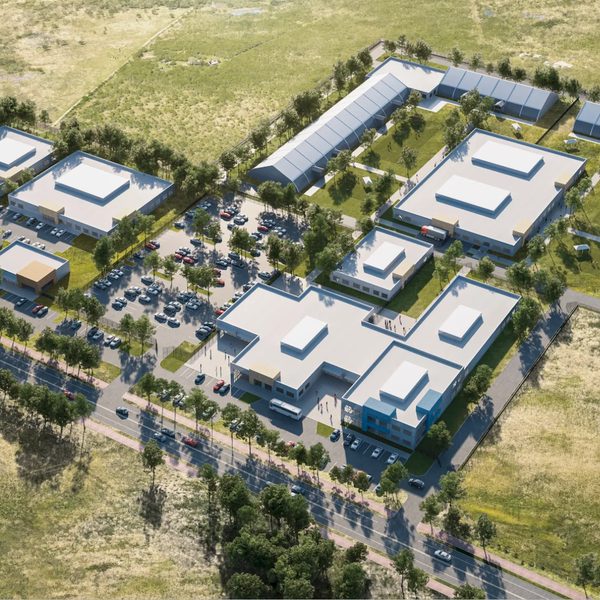40 Years Ago: Police Kill Two Students at Jackson State in Mississippi, Ten Days After Kent State Killings
Four decades ago, on May 4, 1970, four students were killed at Kent
State University when National Guardsmen opened fire on hundreds of
unarmed students at an on-campus antiwar rally. The killings received
national media attention and are still remembered forty years later
across the country. But the media has largely forgotten what happened
just ten days after the Kent State shootings. On May 14, 1970, local and
state police opened fire on a group of students at the predominantly
black Jackson State College in Mississippi. In a twenty-eight-second
barrage of gunfire, police fired hundreds of rounds into the crowd. Two
were killed and a dozen injured. We speak with Gene Young, a former
student at Jackson State who witnessed the shooting.
"Fire in the Heartland", excerpt from
the new documentary 'Fire
in the Heartland: Kent State, May 4th, and Student Protest'.
Gene Young, witness to the Jackson State
tragedy and longtime civil rights activist. He began his activism as a
pre-teen, getting arrested for civil disobedience at a bus station at
the age of twelve. Before his thirteenth birthday, Young took his first
plane ride to New York to speak to civil rights groups. He attended the
1963 March on Washington and testified at the House of Representatives,
alongside civil- and voting-rights activist Fannie Lou Hamer. He has
continued his activism to this day and was a featured speaker last week
at an event commemorating the fortieth anniversary of the Kent State
shootings.
An Urgent Message From Our Co-Founder
Dear Common Dreams reader, The U.S. is on a fast track to authoritarianism like nothing I've ever seen. Meanwhile, corporate news outlets are utterly capitulating to Trump, twisting their coverage to avoid drawing his ire while lining up to stuff cash in his pockets. That's why I believe that Common Dreams is doing the best and most consequential reporting that we've ever done. Our small but mighty team is a progressive reporting powerhouse, covering the news every day that the corporate media never will. Our mission has always been simple: To inform. To inspire. And to ignite change for the common good. Now here's the key piece that I want all our readers to understand: None of this would be possible without your financial support. That's not just some fundraising cliche. It's the absolute and literal truth. We don't accept corporate advertising and never will. We don't have a paywall because we don't think people should be blocked from critical news based on their ability to pay. Everything we do is funded by the donations of readers like you. Will you donate now to help power the nonprofit, independent reporting of Common Dreams? Thank you for being a vital member of our community. Together, we can keep independent journalism alive when it’s needed most. - Craig Brown, Co-founder |
Four decades ago, on May 4, 1970, four students were killed at Kent
State University when National Guardsmen opened fire on hundreds of
unarmed students at an on-campus antiwar rally. The killings received
national media attention and are still remembered forty years later
across the country. But the media has largely forgotten what happened
just ten days after the Kent State shootings. On May 14, 1970, local and
state police opened fire on a group of students at the predominantly
black Jackson State College in Mississippi. In a twenty-eight-second
barrage of gunfire, police fired hundreds of rounds into the crowd. Two
were killed and a dozen injured. We speak with Gene Young, a former
student at Jackson State who witnessed the shooting.
"Fire in the Heartland", excerpt from
the new documentary 'Fire
in the Heartland: Kent State, May 4th, and Student Protest'.
Gene Young, witness to the Jackson State
tragedy and longtime civil rights activist. He began his activism as a
pre-teen, getting arrested for civil disobedience at a bus station at
the age of twelve. Before his thirteenth birthday, Young took his first
plane ride to New York to speak to civil rights groups. He attended the
1963 March on Washington and testified at the House of Representatives,
alongside civil- and voting-rights activist Fannie Lou Hamer. He has
continued his activism to this day and was a featured speaker last week
at an event commemorating the fortieth anniversary of the Kent State
shootings.
Four decades ago, on May 4, 1970, four students were killed at Kent
State University when National Guardsmen opened fire on hundreds of
unarmed students at an on-campus antiwar rally. The killings received
national media attention and are still remembered forty years later
across the country. But the media has largely forgotten what happened
just ten days after the Kent State shootings. On May 14, 1970, local and
state police opened fire on a group of students at the predominantly
black Jackson State College in Mississippi. In a twenty-eight-second
barrage of gunfire, police fired hundreds of rounds into the crowd. Two
were killed and a dozen injured. We speak with Gene Young, a former
student at Jackson State who witnessed the shooting.
"Fire in the Heartland", excerpt from
the new documentary 'Fire
in the Heartland: Kent State, May 4th, and Student Protest'.
Gene Young, witness to the Jackson State
tragedy and longtime civil rights activist. He began his activism as a
pre-teen, getting arrested for civil disobedience at a bus station at
the age of twelve. Before his thirteenth birthday, Young took his first
plane ride to New York to speak to civil rights groups. He attended the
1963 March on Washington and testified at the House of Representatives,
alongside civil- and voting-rights activist Fannie Lou Hamer. He has
continued his activism to this day and was a featured speaker last week
at an event commemorating the fortieth anniversary of the Kent State
shootings.

